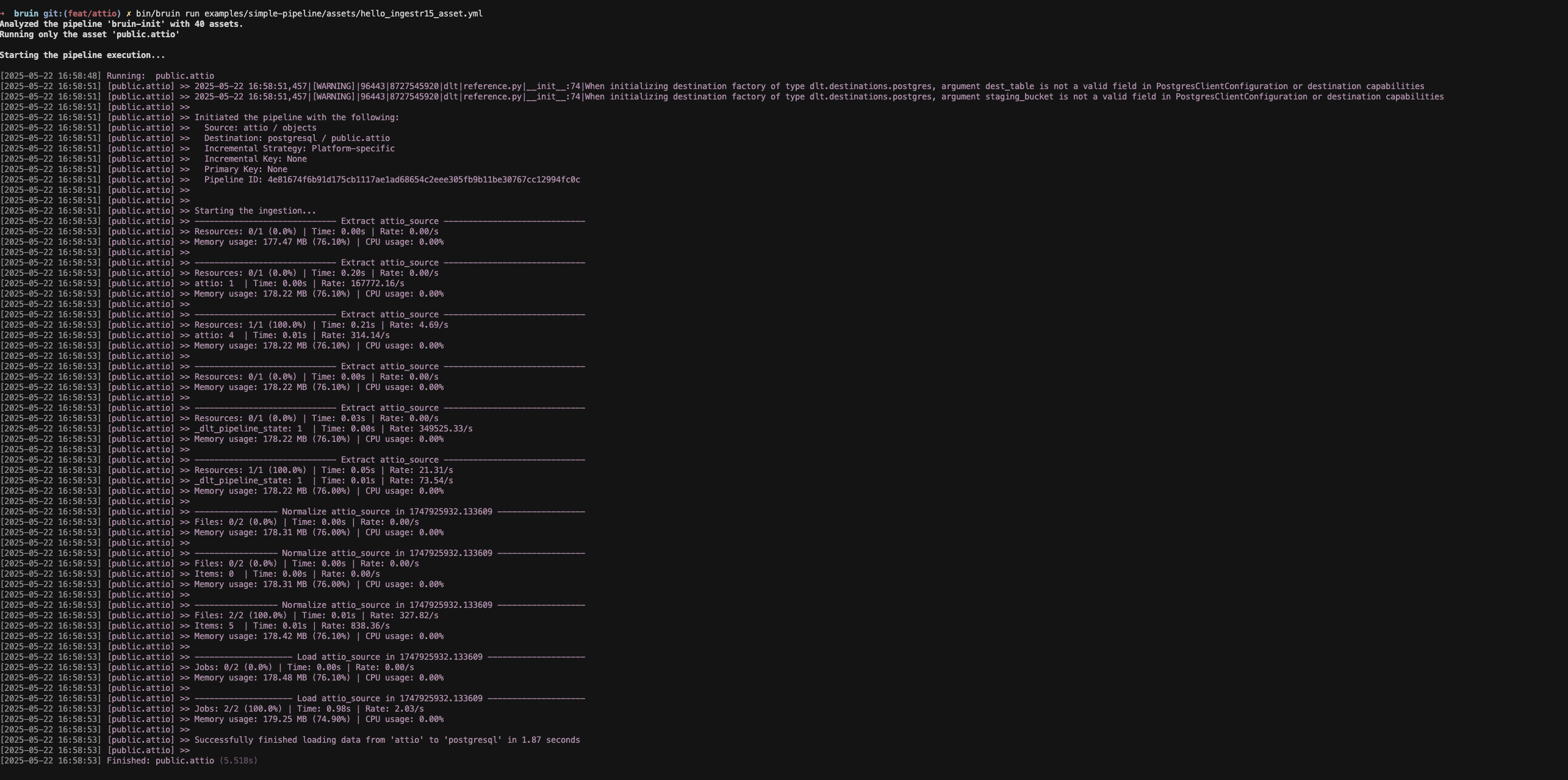Attio
Attio is an AI-native CRM platform that helps companies build, scale, and grow their business.
Bruin supports Attio as a source for Ingestr assets, and you can use it to ingest data from Attio into your data warehouse.
In order to set up Attio connection, you need to add a configuration item in the .bruin.yml file and in asset file.
Follow the steps below to correctly set up Attio as a data source and run ingestion.
Step 1: Add a connection to .bruin.yml file
To connect to Attio, you need to add a configuration item to the connections section of the .bruin.yml file. This configuration must comply with the following schema:
Attio:
- name: "attio"
api_key: "key_123"api_key: the API key used for authentication with the Attio API
Step 2: Create an asset file for data ingestion
To ingest data from Attio, you need to create an asset configuration file. This file defines the data flow from the source to the destination. Create a YAML file (e.g., Attio_ingestion.yml) inside the assets folder and add the following content:
name: public.attio
type: ingestr
connection: postgres
parameters:
source_connection: attio
source_table: 'objects'
destination: postgresname: The name of the asset.type: Specifies the type of the asset. Set this to ingestr to use the ingestr data pipeline.connection: This is the destination connection, which defines where the data should be stored. For example:postgresindicates that the ingested data will be stored in a Postgres database.source_connection: The name of the Attio connection defined in .bruin.yml.source_table: The name of the data table in Attio that you want to ingest.
Available Source Tables
| Table | PK | Inc Key | Inc Strategy | Details |
|---|---|---|---|---|
objects | - | - | replace | Objects are the data types used to store facts about your customers. Fetches all objects. Full reload on each run. |
records:{object_api_slug} | - | - | replace | Fetches all records of an object. For example: records:companies. Full reload on each run. |
lists | - | - | replace | Fetches all lists. Full reload on each run. |
list_entries:{list_id} | - | - | replace | Lists all items in a specific list. For example: list_entries:8abc-123-456-789d-123. Full reload on each run. |
all_list_entries:{object_api_slug} | - | - | replace | Fetches all the lists for an object, and then fetches all the entries from that list. For example: all_list_entries:companies. Full reload on each run. |
Step 3: Run asset to ingest data
bruin run assets/attio_ingestion.ymlAs a result of this command, Bruin will ingest data from the given Attio table into your Postgres database.
